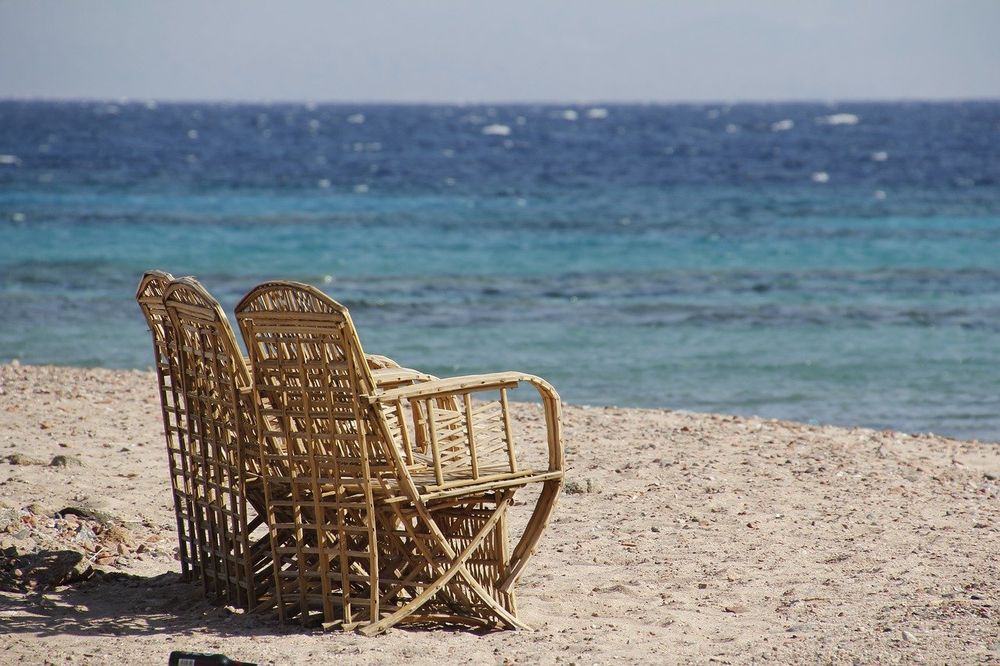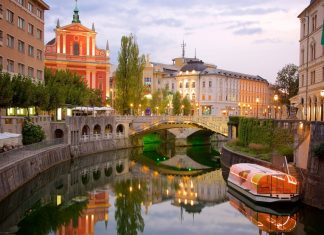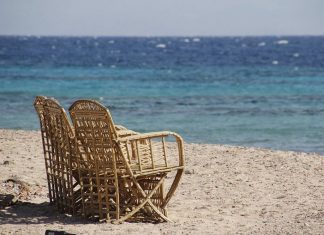Uruguay is one of the smallest of the South American republics. It is bounded to the north by Brazil , to the southeast by the Atlantic , and is separated from Argentina in the west and south by the River Uruguay. The landscape is made up of hilly meadows broken by streams and rivers. There is a string of beaches along the coast. The country enjoys 500km (300 miles) of fine sandy beaches on the Atlantic and the Rio de la Plata, woods, mountains, hot springs, hotels, casinos, art festivals and numerous opportunities for sport and entertainment. Montevideo , the capital, is the country’s natural trading centre. There are nine major bathing beaches, the best of which are Playas and Miramar . The Atlantic coast resorts are popular from December to April, and have fine beaches. Theatre, ballet and symphonic concerts are staged in Montevideo from March to January.
Today, the country’s economic health still relies heavily on its two large neighbours and main trading partners. Uruguay is drawing increasingly more visitors each year, and for good reasons. The country enjoys 500km (300 miles) of fine sandy beaches on the Atlantic and the Río de la Plata, woods, hills, hot springs , hotels, casinos, art festivals and numerous opportunities for sport and entertainment.
Montevideo , the capital, contains more than half of Uruguay’ s population. Located on the River Plate, which has been one of the essential elements for the development of the territory, Montevideo is also the country’s natural trading centre. It is a delight for lovers of culture. Museums, theatres, exhibitions, shows, popular feasts… there is an intense agenda all year round and the city itself is a collection of art and history.
Uruguay’ s main attraction is its beaches, so most visitors come in summer. Along the littoral, summer temperatures are smothering hot, but the hilly interior is cooler, especially at night. Uruguay has a temperate climate. The average temperature for the warmest months of January and February is 21.7° C , and for the coldest month, June, 10° C. Rain falls throughout the year and averages about 890 mm annually. During the winter months cold storms known as pamperos blow from the south-west. You could go to South America at any time of year and find good weather or bad: unbearable tropical humidity or bone-chilling cold.
The equator runs through northern Brazil, Colombia and Ecuador and the countries immediately to the north and south of it are essentially tropical in climate (altitude aside), and so as a general rule are less humid, even if they are as hot, in our winter ( Dec.-Feb.). The further south you go, the more temperate the climate becomes. Generally, winter is a good time to go to Uruguay . Going Uruguay is not something you would do just in a blur, you would to think about it and maybe visit the neighbouring countries.
Uruguay may be a small country but it has impressive artistic and literary traditions. International acclaim has greeted artists such as Pedro Figari, a painter of bucolic scenes, and José Enrique Rodó, arguably the nation’s greatest writer. Theater is popular and playwrights such as Mauricio Rosencof – a former Tupamaros founder tortured by the military government in the 1970s – are prominent in cultural life. Most of the country’s musical and dance traditions (folk songs, polkas, waltzes, tangos, etc) came from Europe but developed local hybrids. Football is a national obsession. Uruguayans who profess a religion are almost exclusively Roman Catholic, but the Church and state are officially separate. Other religions have made small inroads: There is a small Jewish community in Montevideo , several evangelical Protestant groups and traces of Sun Myung Moon’s Unification Church .











